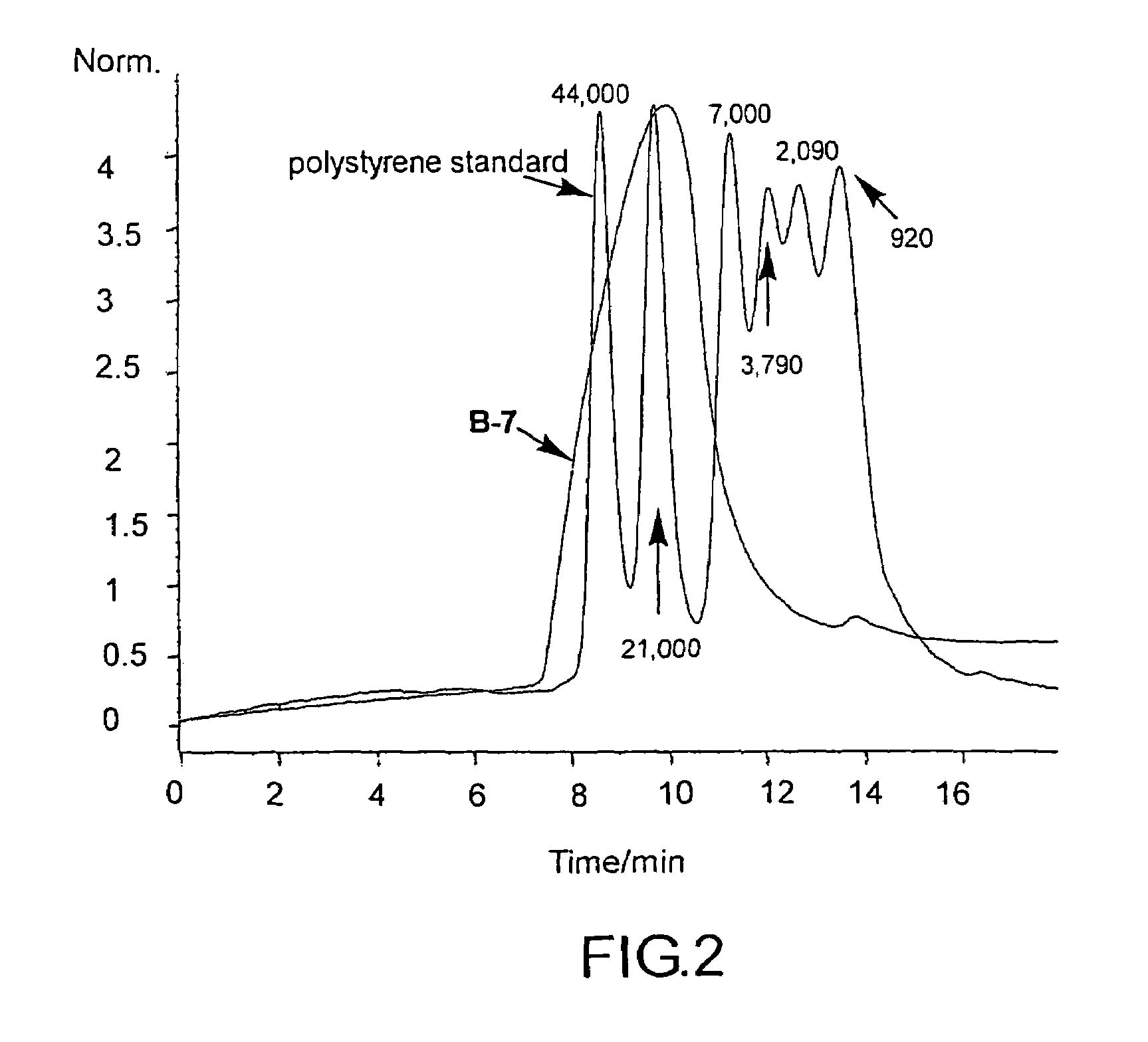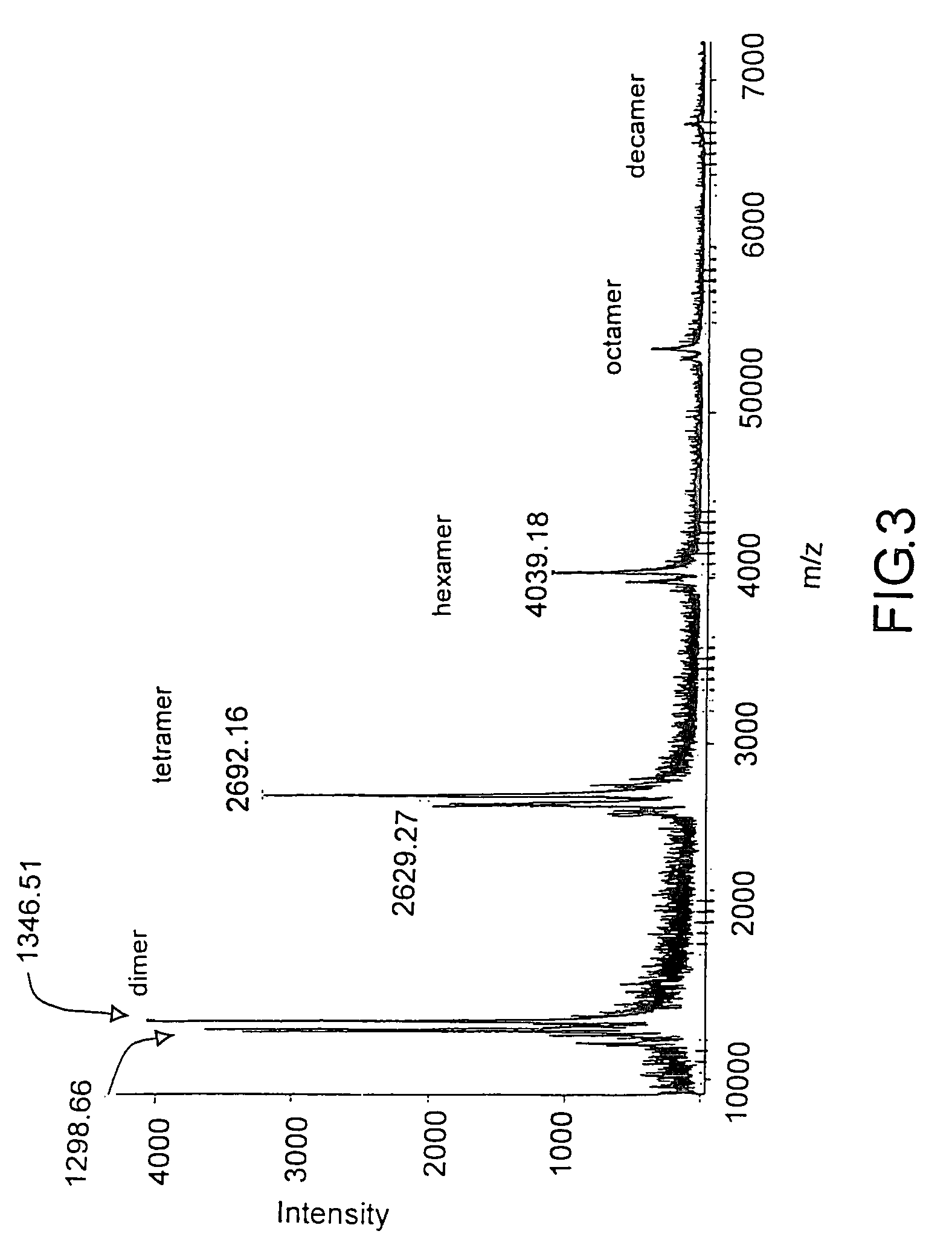Porphyrin array exhibiting large two photon absorption property and including, as structural unit, bis (imidazolylporphyrin metal complex) linked with acetylenic bond and the derivative thereof, and method of producing the same
a two-photon absorption and polymer technology, applied in the field of porphyrin metal complexes, can solve the problems of inability to further improve the two-photon absorption property of porphyrin polymer, inability to adjust the length of the polymer, and few reports on the two-photon absorption of porphyrin. achieve the effect of a larger two-photon absorption
- Summary
- Abstract
- Description
- Claims
- Application Information
AI Technical Summary
Benefits of technology
Problems solved by technology
Method used
Image
Examples
example 1
Measurement Example 1
8) Measurement of Two-Photon Absorption Cross Section
[0136]The spectra of two-photon absorption of the arrays were measured in a chloroform solution, using the open aperture Z-scan method, with a Ti: sapphire pulse laser having a time resolution of 120 femtosecond. The wavelength was varied from 817 to 1282 nm by an optical parametric amplifier (OPA). The measurement was carried out using a 1 mm cell and scanning a distance of 60 mm fore and aft of the focus of the incident light (below 1 mW). No change was observed in the visible and ultraviolet absorption spectrum between before and after the Z-scan measurement. The value of the two-photon absorption cross section σ(2) was obtained from the following formula.
σ(2)=hωβ / N (1)
[0137]In the above-mentioned formula (1), hω represents photon energy, N represents the number density of molecules, β represents the two-photon absorption coefficient, satisfying the following formula.
q=βI0L (2)
[0138]In the above-mentioned...
example 2
[0147]A synthesis example of the porphyrin array represented by the formula (4) of the present invention will be described below, but the synthesis method thereof is not limited to this.
Meso-(methoxycarbonylethyl) dipyrromethane (A-4)
[0148]Meso-(methoxycarbonylethyl) dipyrromethane (A-4) was synthesized by stirring methoxycarbonyl propanal (11.6 g, 0.1 mol) and pyrrole (280 mL, 4 mol) in the presence of trifluoroacetic acid (1.4 mL, 10 mmol), in a method similar to that described in the reference (Y. Tomohiro, A. Satake, Y. Kobuke, J. Org. Chem. 2001, 66, 8442–8446). The resulting product was purified with silica gel chromatography (eluent: hexane / EtOAc (5:1)), whereby 17 g (73%) of meso-(methoxycarbonylethyl) dipyrromethane (A-4) was obtained.
[0149]1H NMR (600 MHz, CDCl3) δ 2.22–2.26 (m, 2H), 2.29–2.33 (m, 2H), 3.63 (s, 3H), 3.99 (t, J=7.2 Hz, 1H), 6.05–6.07 (m, 2H, pyH4), 6.12–6.14 (m, 2H, pyH5), 6.58–6.62 (m, 2H, pyH2), 7.78 (br, 2H, NH); 13C NMR (150 MHz, CDCl3) δ 29.5, 31.9, 36...
PUM
| Property | Measurement | Unit |
|---|---|---|
| Absorption cross section | aaaaa | aaaaa |
| Absorption cross section | aaaaa | aaaaa |
| Absorption cross section | aaaaa | aaaaa |
Abstract
Description
Claims
Application Information
 Login to View More
Login to View More - R&D
- Intellectual Property
- Life Sciences
- Materials
- Tech Scout
- Unparalleled Data Quality
- Higher Quality Content
- 60% Fewer Hallucinations
Browse by: Latest US Patents, China's latest patents, Technical Efficacy Thesaurus, Application Domain, Technology Topic, Popular Technical Reports.
© 2025 PatSnap. All rights reserved.Legal|Privacy policy|Modern Slavery Act Transparency Statement|Sitemap|About US| Contact US: help@patsnap.com



